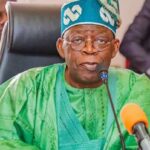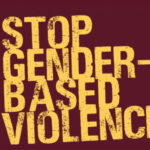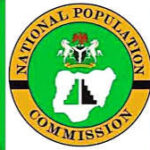Kwankwasiyya drives its name from Kwankwaso, a village in Madobi Local Government Area of Kano State and home town of its national leader, Dr. Rabi’u Musa Kwankwaso.
The present Kwankwasiyya Movement started immediately after the PDP lost 2007 election as PDP Zalla before it was changed to Kwankwasiyya.
The idea was conceived by Dr. Rabi’u Sulaiman Bichi with a view to retaining members of the PDP after the party lost the election that year.
Dr. Bichi, who was also the first chairman of the movement, told Daily Trust on Sunday that he conceived the idea in order to retain members of the PDP, as according to him, at that time, Dr. Kwankwaso, himself and other influential members of the party were not holding any political office, hence could not run the affairs of the party.
“I was afraid at that time that if nothing was done to keep our political activities alive, many people would leave the party to other political parties. So, I came up with the idea in order to retain our supporters.
“I first approached Dr. Hafiz Abubakar and he agreed with me and together, we came up with so many ideologies like promotion of good governance, politics without bitterness, educating people to know their rights under a democratic government and promoting the youth to become self-reliant among other things.
“We spent like five months developing ideas and programmes for the movement. So, after we developed these programmes and ideologies, we decided to incorporate Senator Bello Hayatu Gwarzo who was at that time the highest-ranking officer in the PDP being a senator. So, we continued with our meetings, sometimes in my house and sometimes at the residence of Senator Gwarzo or Prof. Abubakar. It was towards its final conclusion that we drafted Alhaji Aminu Babba Dan Agundi and Governor Ganduje because at that time, Ganduje was in Chad and he agreed with us.”
Dr. Bichi recalled that at the end of it, he was assigned to take charge as the chairman of the movement, noting, “We started with the youth. In fact, five of us started and later we become 22. Some of the youth we started the journey with include Salisu Ayo, Usman Bagwanje, Jafar Sani Bello, Lawal Sale Gaya, Yusuf Sulaiman Babangida Dawo-Dawo and Idris Aliyu Faruruwa.”
He said it was at that time that they approached Dr. Kwankwaso who initially rejected the idea because he did not like anything organization, but later when he read more about the whole idea, he gave the pioneer founders of the movement the go ahead to continue with it.
“After Kwankwaso accepted the movement, it was expanded and I was appointed its first chairman. To ensure smooth running of the movement, I converted my personal office at Sharada Quarters into Kwankwasiyya office,” he said.
Another version of the story on the formation of the movement says it came into being ahead of the 2007 general election when some leaders of the PDP realized that the party couldn’t win election without uniting its members who formed several camps in the state.
It would be recalled that after Rabi’u Kwankwaso was defeated by Malam Ibrahim of the defunct All Nigeria Peoples Party (ANPP) in 2003, the PDP was factionalised into various camps including Wali’s camp, Rimi’s camp, Musa Gwadabe’s camp and Yan Biyar camp under the leadership of Alhaji Ibrahim Dan Azumi Gwarzo. The Yan Biyar included Architect Aminu Dabo, Alhaji Yusuf Ado Kibiya, late Senator Isa Yahaya Zarewa, Alhaji Kabiru Kama-Kasa and Alhaji Ibrahim Dan Azumi Gwarzo.
It was at that moment that some notable politicians in the party decided to come up with an independent platform that would unify those camps to enable the party win elections in the state.
As at that time, the Kwankwasiyya Movement had influential politicians as its members like the incumbent governor, Abdullahi Umar Ganduje, Dr. Rabi’u Sulaiman Bichi, Alhaji Yusuf Ado Kibiya, Arch. Aminu Dabo and Bala Muhammad Gwagwarwa.
Others included Comrade Aminu Abdulsalam, Dr. Yunusa Adamu Dangwani, Dr Akilu Sani Indabawa, Hajiya Baraka Sani, Alhaji Mukhtari Ishaq, Dr. Hafiz Abubakar and many others.
The purpose of establishing the movement, Daily Trust on Sunday gathered, was achieved as the movement united members of the PDP who hitherto were divided for one reason or the other even though they belonged to one party.
The movement became a determined factor in the political activities in the PDP including choosing of contenders to various political posts.
For instance, the Kwankwasiyya played a vital role in bringing Alhaji Ahmed Garba Bichi as the PDP governorship candidate in 2007 and many candidates for other political posts.
Also, in 2011, it brought Dr. Kwankwaso as the governorship flag bearer of the PDP. Not only that, the movement campaigned and mobilized voters for the former governor. It was apparent that without the role played by the Kwankwasiyya, the PDP could not win the election in Kano in 2011.
Daily Trust on Sunday observed that the victory of Kwankwaso in 2011 lifted the status of the Kwankwasiyya not only on the part of its members, but among many people in the state because the movement clearly proved that with high level coordination and commitment, voters could succeed in determining the type of leaders they want.
Again, Kwankwaso’s victory in 2011 made the movement stronger, popular and acceptable to many people within and outside Kano State.
It reached a point where one could not detach the movement from the mainstream PDP even though it was just a pressure group within the party.
Therefore, throughout the four-year second tenure of Dr. Kwankwaso, the Kwankwasiyya played a great role in governance and politics in the state.
However, soon after Kwankwaso completed his second tenure, the Kwankwasiyya began to witness setbacks by losing some of its notable members. The first to exit the movement was the incumbent governor of the state who led some state lawmakers and commissioners out of the movement towards the end of his first tenure.
Next to Ganduje were some other notable members including Dr. Hafiz Abubakar, Arch. Aminu Dabo, Alhaji Bala Muhammad Gwagwarwa, General Lawal Dambazau and the rest of others who abandoned the movement and joined the APC during the campaign period of the 2019 general elections.
Despite the massive defection of its members, the movement supported the candidature of Abba Gida-Gida who contested for governorship under the PDP in the last gubernatorial election. However, Gida-Gida was defeated by Ganduje in the re-run election that took place on March 23, 2019.
Political analysts say the massive defection of influential members of the movement might be one of the factors that led to the defeat of the PDP by the APC in the March governorship poll.
Later, the pioneer chairman of the movement, Dr. Bichi and his teeming supporters defected from both Kwankwasiyya and the PDP for the APC.
Commenting on his exit from Kwankwasiyya, he said, “I dumped Kwankwasiyya movement because it has derailed from its original ideologies and I am sure many other members of the movement who left before me dumped it for similar reasons.”
Speaking while receiving the former PDP chairman, Dr. Rabi’u Bichi into the APC, Governor Abdullahi Umar Ganduje said the exit of Bichi had signified the total collapse of the Kwankwasiyya movement.
Ganduje recalled, “It was Rabi’u Suleiman Bichi and I that formed the Kwankwasiyya. I suggested for its formation, its name and the type of dressing-that is, white caftan and red cap, while Bichi was its first chairman who established its structure in all the 44 local government areas in Kano State. So, my reunion with Bichi means the total collapse of Kwankwasiyya.
“Today is a happy day and happy moment for me, because I am in the midst of my political associates with who I’d been for a very long time. We have been doing our politics together but departed for sometime, here we are today reuniting because we are part and parcel of one another.”
On his part, Barrister Maliki Kuliya, a Commissioner for Justice in the Kwankwaso administration, said the defection of some members of the Kwankwasiyya would not in any way affect its popularity in the state.
Kuliya said, “Earlier on, some notable members of the movement defected, but we still won election in the 2019 general election. We were only deprived our rights under the banner of the so-called inconclusive elections.
“I can confidently tell you that the leaders or influential politicians are not the strength of Kwankwasiyya. Rather, the support base is the common man. The ordinary man is the backbone of Kwankwasiyya. After all, while some are leaving, other are joining it.
“In fact, one of the women that joined the APC together with Bichi has returned to Kwankwasiyya and there are many other members of the movement who returned after leaving the movement alongside the former Secretary to the State Government.
“Take for instance, Alhaji Baba and Ali Datti Yako, they were with Malam Ibrahim Shekarau before, but later they left him and joined Kwankwasiyya. So, that is how politics is being played in Kano. This can tell you that Kwankwasiyya is deeply rooted not only in Kano but in whole country.”
Kuliya affirmed that the Kwankwasiyya would remain stronger and in 2023, it would surprise many people, as according to him, the movement is still intact and would maintain its ground till 2023.
He added, “We have our programmes and we will continue with them in order to keep the movement alive. When it was formed, the movement empowered many people through various programmes and will continue to empower youths and women through our programmes. We have done that when in government and have done it when we are not in government. So, there is no cause for alarm as far Kwankwasiyya is concerned.”

 Join Daily Trust WhatsApp Community For Quick Access To News and Happenings Around You.
Join Daily Trust WhatsApp Community For Quick Access To News and Happenings Around You.


